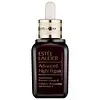What's inside
What's inside
 Key Ingredients
Key Ingredients

 Benefits
Benefits

 Concerns
Concerns

 Ingredients Side-by-side
Ingredients Side-by-side

Water
Skin ConditioningBifida Ferment Lysate
Skin ConditioningMethyl Gluceth-20
HumectantPEG-75
HumectantBis-PEG-18 Methyl Ether Dimethyl Silane
EmollientButylene Glycol
HumectantPropanediol
SolventCola Acuminata Seed Extract
Skin ConditioningHydrolyzed Algin
Pantethine
EmollientCaffeine
Skin ConditioningLecithin
EmollientTripeptide-32
Skin ConditioningEthylhexylglycerin
Skin ConditioningSodium Rna
Skin ConditioningBisabolol
MaskingGlycereth-26
HumectantSqualane
EmollientSodium Hyaluronate
HumectantOleth-3 Phosphate
Caprylyl Glycol
EmollientLactobacillus Ferment
Skin ConditioningOleth-3
EmulsifyingOleth-5
EmulsifyingAnthemis Nobilis Flower Extract
MaskingYeast Extract
Skin ConditioningCholeth-24
EmulsifyingHydrogenated Lecithin
EmulsifyingCeteth-24
CleansingTocopheryl Acetate
AntioxidantEthylhexyl Methoxycinnamate
UV AbsorberHexylene Glycol
EmulsifyingCarbomer
Emulsion StabilisingTriethanolamine
BufferingTrisodium EDTA
BHT
AntioxidantXanthan Gum
EmulsifyingPhenoxyethanol
PreservativeCI 14700
Cosmetic ColorantCI 19140
Cosmetic ColorantWater, Bifida Ferment Lysate, Methyl Gluceth-20, PEG-75, Bis-PEG-18 Methyl Ether Dimethyl Silane, Butylene Glycol, Propanediol, Cola Acuminata Seed Extract, Hydrolyzed Algin, Pantethine, Caffeine, Lecithin, Tripeptide-32, Ethylhexylglycerin, Sodium Rna, Bisabolol, Glycereth-26, Squalane, Sodium Hyaluronate, Oleth-3 Phosphate, Caprylyl Glycol, Lactobacillus Ferment, Oleth-3, Oleth-5, Anthemis Nobilis Flower Extract, Yeast Extract, Choleth-24, Hydrogenated Lecithin, Ceteth-24, Tocopheryl Acetate, Ethylhexyl Methoxycinnamate, Hexylene Glycol, Carbomer, Triethanolamine, Trisodium EDTA, BHT, Xanthan Gum, Phenoxyethanol, CI 14700, CI 19140
Water
Skin ConditioningCyclohexasiloxane
EmollientAlcohol Denat.
AntimicrobialGlycerin
HumectantButylene Glycol
HumectantDimethicone
EmollientZea Mays Germ Oil
EmollientPanthenol
Skin ConditioningTriethanolamine
BufferingAscorbyl Glucoside
AntioxidantGlyceryl Linoleate
EmollientPhenoxyethanol
PreservativePolyperfluoromethylisopropyl Ether
Skin ConditioningPolyacrylamide
Dimethiconol
EmollientGlyceryl Oleate
EmollientCarbomer
Emulsion StabilisingCetyl Alcohol
EmollientC13-14 Isoparaffin
EmollientParfum
MaskingAcrylates/C10-30 Alkyl Acrylate Crosspolymer
Emulsion StabilisingMethylparaben
PreservativeGlycine Soja Oil
EmollientCaffeine
Skin ConditioningTocopherol
AntioxidantHydrogenated Lecithin
EmulsifyingCastanea Sativa Seed Extract
Skin ConditioningBenzophenone-4
UV AbsorberMenthol
MaskingLimonene
PerfumingPEG-100 Stearate
Glyceryl Stearate
EmollientLaureth-7
EmulsifyingHydrolyzed Soy Protein
HumectantPotassium Cetyl Phosphate
EmulsifyingButylparaben
MaskingDisodium EDTA
Ethylparaben
PreservativeGlyceryl Linolenate
EmollientPropylparaben
PreservativeCitrus Aurantium Dulcis Juice
Skin ConditioningCitrus Limon Juice
Skin ConditioningLinalool
PerfumingCitral
PerfumingCI 42090
Cosmetic ColorantCI 14700
Cosmetic ColorantWater, Cyclohexasiloxane, Alcohol Denat., Glycerin, Butylene Glycol, Dimethicone, Zea Mays Germ Oil, Panthenol, Triethanolamine, Ascorbyl Glucoside, Glyceryl Linoleate, Phenoxyethanol, Polyperfluoromethylisopropyl Ether, Polyacrylamide, Dimethiconol, Glyceryl Oleate, Carbomer, Cetyl Alcohol, C13-14 Isoparaffin, Parfum, Acrylates/C10-30 Alkyl Acrylate Crosspolymer, Methylparaben, Glycine Soja Oil, Caffeine, Tocopherol, Hydrogenated Lecithin, Castanea Sativa Seed Extract, Benzophenone-4, Menthol, Limonene, PEG-100 Stearate, Glyceryl Stearate, Laureth-7, Hydrolyzed Soy Protein, Potassium Cetyl Phosphate, Butylparaben, Disodium EDTA, Ethylparaben, Glyceryl Linolenate, Propylparaben, Citrus Aurantium Dulcis Juice, Citrus Limon Juice, Linalool, Citral, CI 42090, CI 14700
 Reviews
Reviews

Ingredients Explained
These ingredients are found in both products.
Ingredients higher up in an ingredient list are typically present in a larger amount.
Butylene Glycol (or BG) is used within cosmetic products for a few different reasons:
Overall, Butylene Glycol is a safe and well-rounded ingredient that works well with other ingredients.
Though this ingredient works well with most skin types, some people with sensitive skin may experience a reaction such as allergic rashes, closed comedones, or itchiness.
Learn more about Butylene GlycolCaffeine is most associated with coffee, tea, and cacao. In skincare, it helps with calming inflammation and is rich in antioxidants.
While caffeine is used to treat cellulite and and dark circles, further studies are needed to prove this. It has been believed to help with these skin conditions due to its ability to dilate blood vessels and increase blood flow.
Some studies are looking into caffeine's ability to protect against UV rays.
Learn more about CaffeineCarbomer is a polymer of acrylic acid. Its main role is to create a gel consistency.
A high amount of carbomer can cause pilling or balling up of products. Don't worry, most products contain 1% or less of carbomer.
Ci 14700 is a synthetic red dye.
Hydrogenated Lecithin is created from the hydrogenation of lecithin (a group of phospholipids). Hydrogenation is a chemical reaction between hydrogen and another element.
This ingredient is an emollient and emulsifier. As an emollient, it helps soften skin by trapping moisture within. As an emulsifier, it prevents oil and water ingredients from separating.
Phenoxyethanol is a preservative that has germicide, antimicrobial, and aromatic properties. Studies show that phenoxyethanol can prevent microbial growth. By itself, it has a scent that is similar to that of a rose.
It's often used in formulations along with Caprylyl Glycol to preserve the shelf life of products.
Triethanolamine is an emulsifier and pH adjuster. It is created using ethylene oxide and ammonia. This gives Triethanolamine a nitrogen core and a similar scent to ammonia.
As an emulsifier, it prevents ingredients from separating and enhances texture by adding volume to a product.
PH adjusters are common in cosmetic products. The pH of a product can affect the effectiveness of other ingredients. A product with a high pH may also irritate the skin.
Learn more about TriethanolamineWater. It's the most common cosmetic ingredient of all. You'll usually see it at the top of ingredient lists, meaning that it makes up the largest part of the product.
So why is it so popular? Water most often acts as a solvent - this means that it helps dissolve other ingredients into the formulation.
You'll also recognize water as that liquid we all need to stay alive. If you see this, drink a glass of water. Stay hydrated!
Learn more about Water